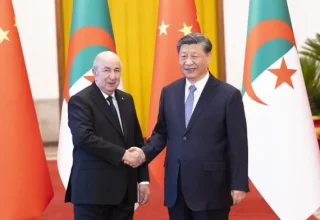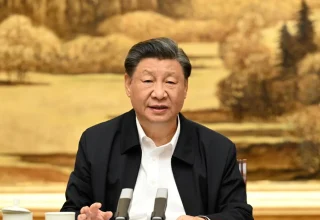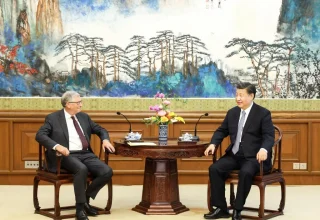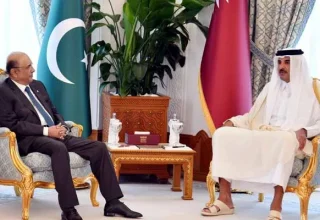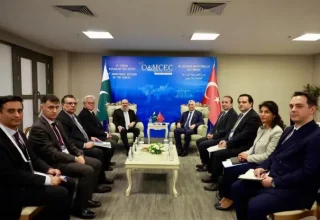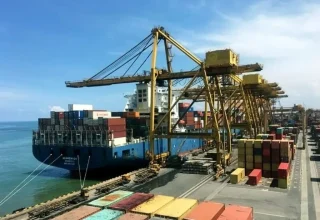
The Pakistan Institute of Development Economics (PIDE), under its RASTA Competitive Grants Programme, organized a seminar on “Automotive Value Chains in Pakistan” featuring Dr. Muhammad Shafaat Nawaz, RASTA Fellow and Fulbright Scholar, moderated by Dr. Usman Qadir, Senior Research Economist and Director (CITDE), PIDE.
Dr. Nawaz presented findings from his doctoral research on OEM-mediated Global Production Networks (GPNs) in Pakistan’s automotive industry — a study funded jointly by the Fulbright Program (U.S. Department of State), PIDE’s RASTA CGP Round 4, and the American Association of Geographers. His research redefines how Pakistan integrates into global value chains and introduces the concept of OEM-mediated GPNs, where Original Equipment Manufacturers (OEMs) act as intermediaries between global lead firms and local suppliers, shaping industrial outcomes, technological upgrading, and regional development.
Drawing on 72 interviews, a survey of 319 local firms, and advanced network analysis, Dr. Nawaz revealed that three Japanese firms — the “Big Three” — dominate 99% of Pakistan’s passenger car market and 89% of light commercial vehicles, creating a highly oligopolistic structure. The tractor segment is equally concentrated, with two firms controlling 99% of production, while Atlas Honda retains about 67% of the motorcycle market. These OEMs, operating as subsidiaries, partners, or licensed producers, have enabled Pakistan’s entry into global value chains but have also restricted innovation, exports, and research autonomy. Unlike other developing economies that attract high-value global suppliers such as Bosch or Denso, Pakistan’s auto sector lacks indigenous R&D and technology transfer linkages.
Dr. Nawaz classified local firms into three main categories: captive vendors, bound by low-value repetitive contracts; emerging suppliers, who gain autonomy through international certifications like IATF 16949 and participation in global trade exhibitions; and aftermarket producers, who perform low-technology subcontracting for local markets.
His analysis demonstrated that a one-unit increase in OEM business share leads to a 0.09-unit rise in annual business growth, statistically significant at the 0.001 level. However, this growth largely benefits firms that successfully diversify and upgrade, while others remain locked in dependency cycles.
Tracing Pakistan’s policy evolution from 1947 to 2026, Dr. Nawaz explained how the industrial strategy transitioned from state-led nationalization to privatization and localization, and later toward tariff liberalization and CKD-based imports. While recent initiatives like the Automotive Industry Development and Export Plan (AIDEP 2021–26) promote electric and hybrid vehicles, the oligopoly of the Big Three remains intact. He emphasized that Pakistan’s challenge is not simply integration but negotiating better terms of integration — urging policymakers to revise OEM contracts, expand design and export rights, and support emerging suppliers in achieving certifications and global linkages.
During the discussion session, Dr. Mahmood Khalid, Acting Project Director at COE-CPEC, PIDE, raised a key question on whether Pakistan’s two-wheeler manufacturers — many outsourcing production to China and rebranding locally — represent an opportunity or a risk to domestic industrialization. He also asked whether Pakistan’s experience is unique or part of a global trend in the automotive sector.
Responding, Dr. Nawaz noted that while such cross-border manufacturing can improve competitiveness, it also risks deindustrializing local production if not accompanied by clear policy safeguards. He observed that similar patterns exist globally, citing India and Brazil as countries that successfully built local lead firms by giving OEMs contractual autonomy and by attracting global suppliers. Brazil, he added, focused on technology-driven partnerships such as Bosch manufacturing, which strengthened its innovation ecosystem. He argued that Pakistan must now pivot its policy focus from attracting lead firms to attracting global suppliers and technology partners to build its industrial base.
Adding to the discussion, Muhammad Shaaf Najib observed that despite the entry of new assemblers, local value addition remains minimal, with most firms still dependent on imported CKDs. He cautioned that the shift toward electric vehicles could wipe out many domestic auto-parts producers unless they move toward higher-value, tech-based manufacturing. Dr. Nawaz agreed, noting that Pakistan’s localization policies have historically focused on low-value components, leaving innovation capacity underdeveloped.
Moderating the session, Dr. Usman Qadir emphasized that Pakistan’s industrial transformation must move “from dependence to competitiveness,” enabling local suppliers to innovate, diversify, and integrate directly into global markets. He concluded that OEM-mediated networks offer access but also impose limits, and sustainable industrial upgrading will depend on empowering firms to innovate beyond OEM dependency, building indigenous R&D capabilities, and aligning industrial and spatial planning with multi-scalar production realities.


